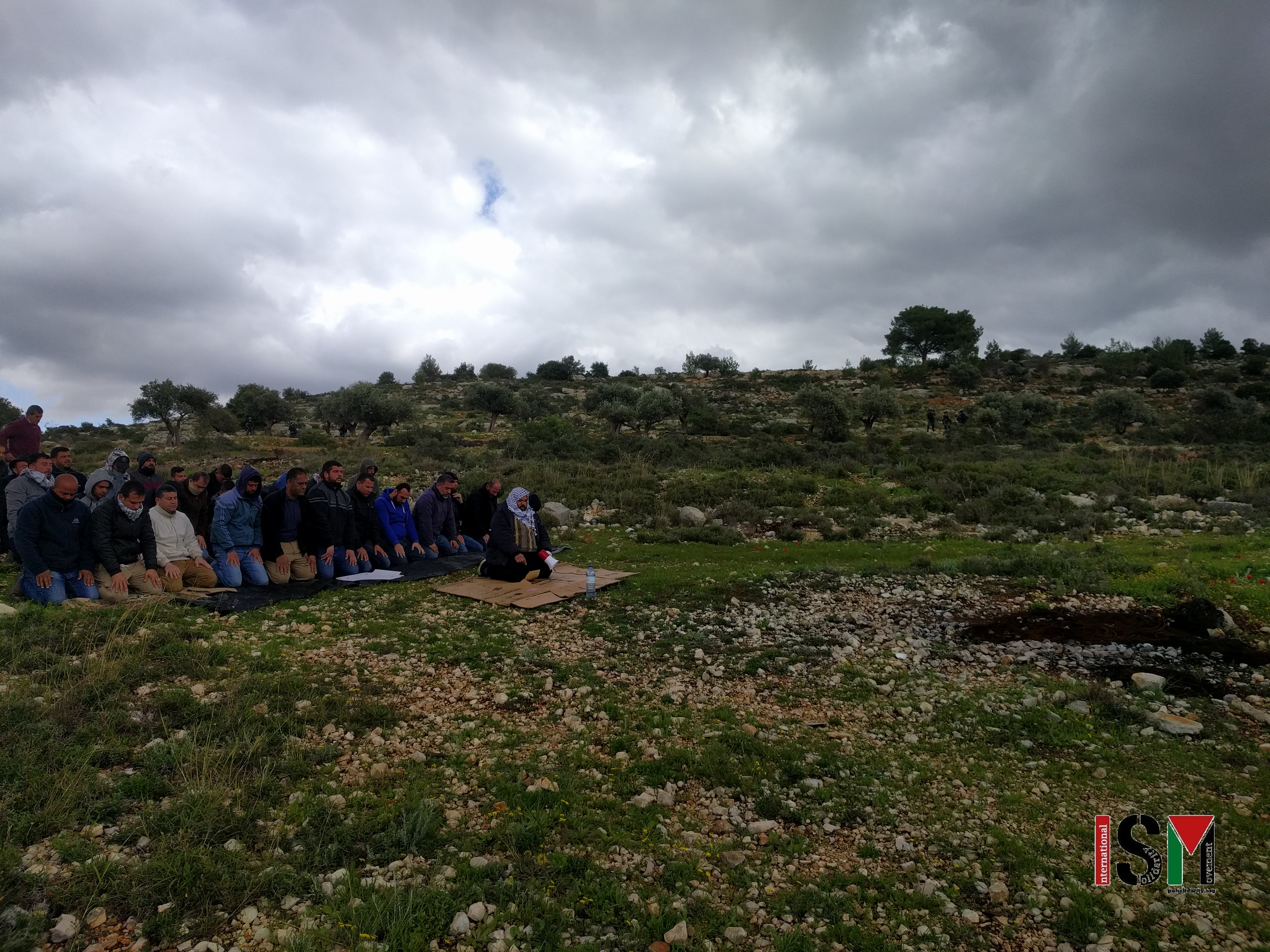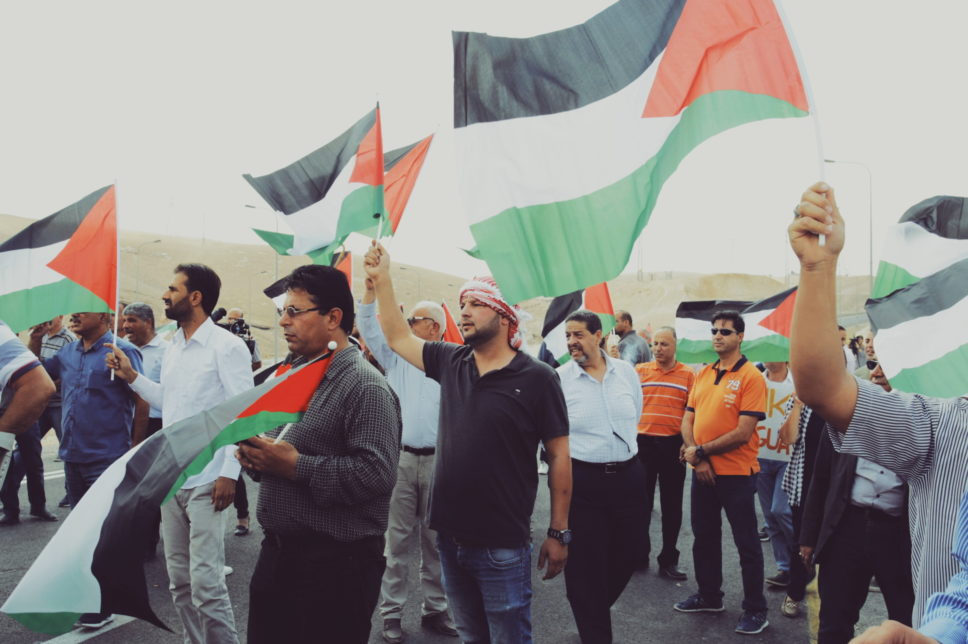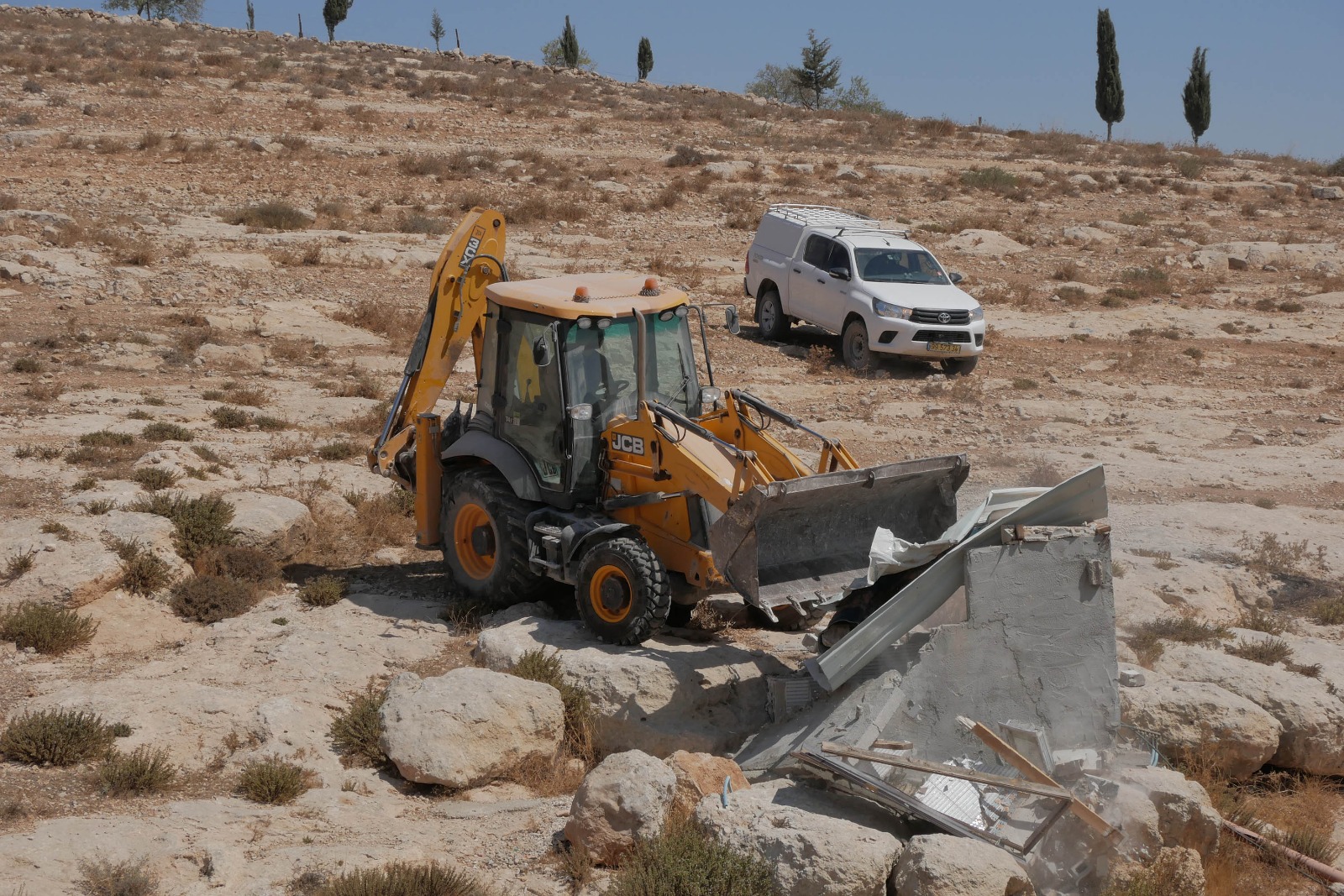Tag: Border Police
-

Palestinians in prayer shot with rubber-coated steel bullets, tear gas.
March 01, 2019 | International Solidarity Movement, Al-Khalil team | Ramallah, occupied Palestine Non-violent peaceful protesters met with tear gas and rubber-coated steel bullets in Ras Karkar. In 2018, settlers invaded land atop al-Risan Mountain, which overlooks the three villages Ras Karkar, Kafr Ni’ma and Kharbatha Bani Harith. Since then local Palestinians have gathered in…
-

Activists stand in solidarity with the residents of Khan al-Ahmar
7 September 2018 | International Solidarity Movement, Ramallah team | Khan al-Ahmar, occupied Palestine After an Israeli court ruling on September 5 2018 confirmed the eviction and demolition of the Palestinian Bedouin village of Khan al-Ahmar, residents of the village, Palestinians from across the West Bank and international activists have gathered each day in solidarity…

